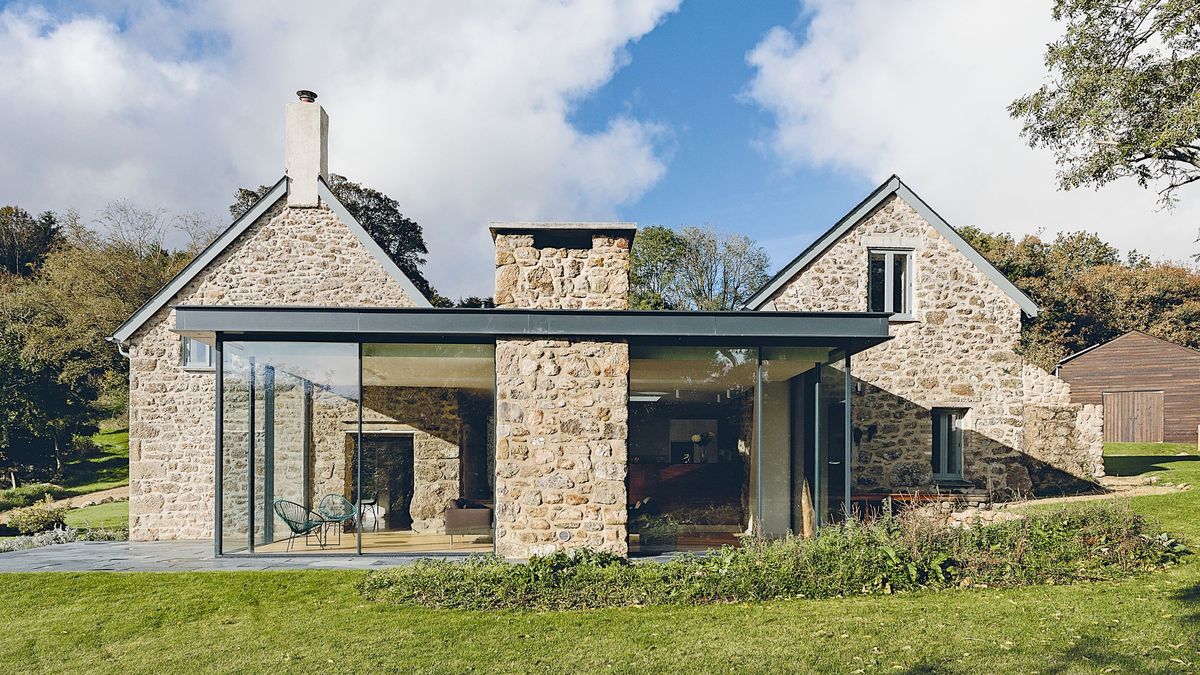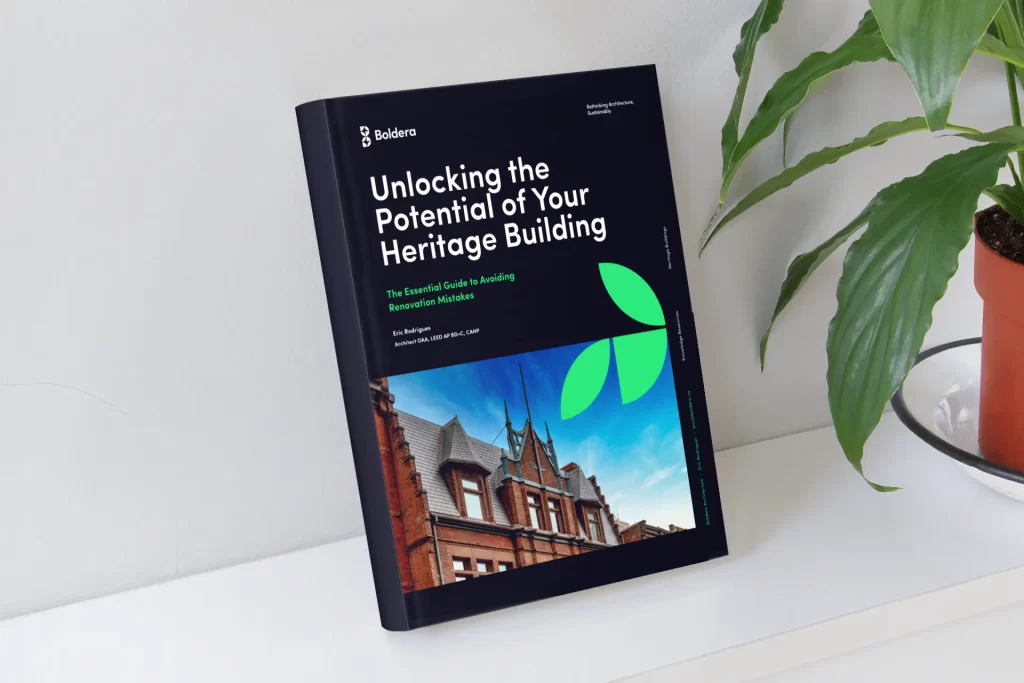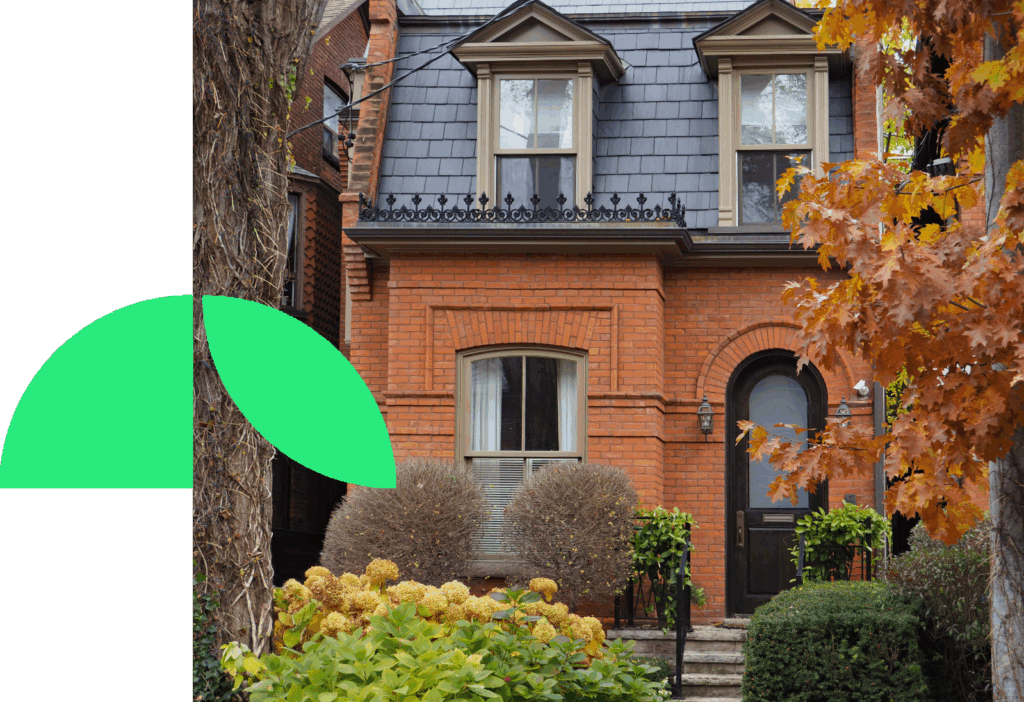Building Additions on Heritage Properties: What You Need to Know
Eric Rodrigues, OAA, LEED AP BD+C, CAHP
Adding to a heritage building involves careful planning to ensure that the new construction complements and enhances the historical character of the property. This article outlines the key considerations and guidelines for making additions to heritage buildings.
Understanding The Type of Your Heritage Building
Adding to a heritage building is a complex and rewarding endeavor that requires careful planning and consideration. The type of classification of your heritage building, whether it is designated under Part IV or Part V of the Ontario Heritage Act, plays a crucial role in determining the guidelines and regulations you must follow. Part IV pertains to individual properties that have been designated for their cultural heritage value, while Part V applies to properties within a designated heritage conservation district.
Understanding these classifications and the associated requirements is essential to ensure that your addition respects and enhances the historical character of the building. This article provides key considerations and guidelines for making additions to heritage buildings, helping you navigate the process smoothly and successfully.

The addition should try to add space to the heritage property without impacting the original heritage attributes of the building.
Heritage Conservation District Plans
Heritage conservation district plans provide guidelines for alterations, including additions, to properties within designated districts. These plans ensure that changes do not detract from the historical and architectural significance of the area.
Review the specific guidelines applicable to your heritage conservation district, which outline acceptable materials, designs, and construction methods.
Zoning and Approval Considerations
Additions to heritage buildings must comply with zoning regulations and require various approvals:
Heritage Permit: Obtain a heritage permit for the proposed addition. This process involves submitting detailed plans and obtaining approval from the local heritage committee or planner.
Building Permit: Ensure that your addition complies with local zoning bylaws and obtain a building permit from the municipal building department.

Extensions to Heritage Homes should not overpower the original building an should be differentiated enough to avoid creating a false historical appearance.
Guidelines for Design Compatible Additions
To ensure that the new addition is sympathetic to the existing heritage structure, consider the following guidelines:
Retention of Heritage Attributes: The addition should not obscure or damage the building’s heritage attributes. Key features such as original walls, windows, and decorative elements should be preserved.
Consistency with Surrounding Buildings : The addition should harmonize with the surrounding heritage buildings in terms of scale, materials, and design.
Appropriate Design and Scale: The new construction should not overpower the original building. It should be subordinate in scale and massing.
Contrasting Additions: While compatibility is important, the addition can be differentiated from the original building to avoid creating a false historical appearance.
Scaling of Windows, Doors, and Height: Ensure that new windows and doors are proportionate to the existing ones. The height of the addition should be in scale with the original structure.
Potential Impacts on the Building's Heritage Status
Consider the following impacts when planning an addition:
Heritage Status: Ensure that the addition does not negatively impact the building’s heritage designation. In some cases, inappropriate alterations could lead to a loss of heritage status. A Heritage Impact Assessment may be necessary to assess the impact of these alterations and explore mitigation strategies.
Community and Stakeholder Feedback: Engage with the community and heritage stakeholders to gather feedback and support for the proposed addition.
Why Work with Boldera?
Engaging a specialized heritage architect like Boldera is crucial in successfully adding to a heritage building. Boldera provides:
Expert Consultation: Professional advice on designing additions that respect and enhance the heritage character.
Smooth Approval Process: Assistance with navigating the complex approval requirements, ensuring compliance with all regulations.
High-Quality Design: Expertise in creating additions that are both functional and sympathetic to the original building’s aesthetics
Conclusion
At Boldera, we are committed to true heritage conservation and adaptive reuse. Our team of experienced heritage architects and specialists is dedicated to preserving the historical integrity of buildings while meeting the needs of modern development. We believe in creative, respectful solutions that enhance the urban landscape and honor the past. Partner with Boldera to ensure your heritage project is successful and meaningful. Contact us today to learn more about how we can help you achieve your vision.
I hope this article has helped you with your planning. If you have questions, book a free 30-minutes Discovery Session with Boldera Architecture. This will unlock the full potential of your project and help you develop a quick action plan. My goal is to help you develop successful projects.






